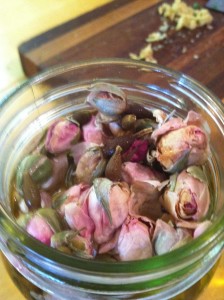How to use Superfoods for Mamas is a big topic! And yummy one. And this post is currently in kinda messy draft version, but perhaps you will find value anyway. It’s time sensitive, with focus on hot weather.
Shall we share favorites and “chew” on it together? I have my faves, but I also am concerned for how some of them are used for postpartum mamas. And oh my, just starting to think about it, there are layers of discussion so, here goes a few of them.
There are some fun guidelines with food tastes and colors and their effects on the natural needs to balance for the weather, as well as the “season” of our bodies after childbirth. There are some very noteable exceptions, good to know about! And we should look at superfoods for restoring balance when immunity is down but the need for lactation and energy to take care of baby is up.
Let’s do summertime today, as it’s summer here. It is time to keep cool! Yet mother’s digestive “fires” are already low, and need help. She needs special help keeping them burning, and reducing hot flashes is not about ice water, it is about stabilizing, rebuilding body and hormones.
Everyone wants to use ice to cool down – makes sense, right? Not in the gut. Oriental traditions even in their hot climes in South East Asia, India and CHina know, it doesn’t work well. Why, they can’t all explain, but even airplane hostesses at least used to know, never offer a Chinese ice water!
Ayurvedic medicine explains the effect is to constrict digestive enzyme effectiveness, and the stomach itself, and to create indigestion, gas and bloating, depending upon the person’s specific strengths and weaknesses. All postpartum women are extra sensitive to cold temp foods and drinks.
So – how to keep cool without cold temp? Energetically, those foods which are sweet, astringent, and bitter tend to cool us down. Yet those which are really astringent, like cranberry and grapefruit, increase vata and are not satisfying or rebuliding – too cleansing is not where mamas need to go, with so much rejuvenation, lactation, and 24/7 on call duties. Rose is bitter and sweet, and combines well with more nutritive substances. It gives it’s properties best in a cool infusion.

Veggies with oxalic acid like chard heat. Leafies in general have their own issues, being very floppy and unstable in the winds of change; they more easily get frayed, and that is the effect on early pp mamas. Dandilion too – has to be balanced with oil, well cooked garlic, well cooked themselves, salt, lime, maybe some toasted cumin, and served with a root vegetable like yams – now we are talkin’.
There are exceptions to the taste and color “rules” – like even sweet citrus, pineapple and early season mango heats, except a little lime is cooling. Red, orange and yellow colors to lesser extent as food and drink tend to warm, including beet, except pomegranite which is awesomely cooling. White things tend to cool nicely, and coconut is superiour here. Yet ripe banana for all it’s virtues including potassium, is heating. Everyone wants banana to sweeten their smoothies as if using fruit was better than natural sugars. Food combining wise, you are creating problems long term if not also short term.
Some favorites and how to balance them
Goji has some warming effect. Sweeter, non citrus juices like grape, blueberry, acai, even apple and pear, and especially pomegranite are lovely complements. My fav? Young Living’s Ningxia Red Juice (goji, aronia, blueberry, et al with stevia, low glycemic!!!) 1-2 oz, with 5-6 oz of Annie’s Coconut water with pulp. If you use pomegranite instead, then it combines nice with chia, or even avocado and spirulina.
Acai is more cooling, and some preps less interesting than others. Lovely with pure pomegranate! I don’t have a favorite brand yet.
Banana is lovely pureed in coconut milk or water – how about adding rose water or rose infusion also, or a splash of vanilla, and soaked dates for iron nutrition? Pinch of cardamom is important here, and for early mamas, wait a week or 2 on this, adding fresh grated ginger too. All but the banana are cooling balance and ripe this time of year.
Spirulina and chlorella – if you don’t know their virtues for many things including recent research on benefit to babies used in pregnancy (link to it), please ask our friend google. In the meantime, 1/2-1 tsp in an easy to digest blender drink like grape or pomegranite with a pinch of himalayan salt, and maybe avocado and maple syrup (cooling, honey heats but is GREAT with avocado in cool weather), maybe 2-3 mint leaves too – and some fresh grated ginger ladies for mamas, blend it well and enjoy! A squeeze of fresh lime with the avocado and greens is magic here. These supergreens need help digesting though small molecules, being cold energy. Fresh ginger is more tridoshic and refreshing than dried.
Chia is warming, but the qualities and nutrition both are lovely for postpartum. We see above use of super greens, pomegranate and grape and others with it. If you use coconut with it, will be creamy, yummy, and need both sweet (soaked dates?) and spice for digesting – the standby, grated ginger and or cardamom, are especially good. Or try clove or black pepper! Clove is postdigestively cooling but really helps agni (our digestive enzymes).
Good fats, like Ghee and coconut oil are too, and these two are cooling. Research years ago linked low blood lipids with postpartum depression. In many mama’s smoothies, I will add 1-3 tspoons of good fats, not just thinking about efa’s here – choose by taste as well as priority effect. We need good cholesterols for feminine hormones, efa 3s for brain, breast and other functions, and toasted sesame has special flavor and health virtues which are well added to the warm almond milk – curried spirulina smoothie with ginger! That one is not so cooling, but great in damper climes.
Almonds and almond milk smoothies … Almond, vanilla, acai, organic milk and other foods are among special hormone or neurotransmitter supportive foods, before we even begin to talk about the buz around certain herbs. Almond and dairy milk though, are great places to add these herbs, as they deliver into the deeper tissues for rejuvenation that way. Serve warm, chai type spices and or soaked saffron and cardamom, teaspoon of ghee with, and maybe some soaked dates. It is a delicious energy drink! Avoid fruit and almond together, please; milk and almond is wonderful.
Yoghurt and kefir are sour, especially after first day freshly made. They clog channels more in early postpartum, and the sour is a taste to minimize for about 10 days. Then – a thinner yummy lassi (2-4 parts water, with spices and sweet or salt) is lovely, before 2 o’clock, with a vegetarian meal. Avoid with fruit, especially banana though. You can sweeten with dates again, which are cooling, and don’t make us gassy as easily as other fruits do with their post digestive sour / gut fermenting effect which interferes with the other digestive stages in the gut.
Carrots are warming, even more, beets. The raw is not a good idea first few weeks after birth. Favor soup! Then? Carrot juice with coconut, and maybe fennel powder maybe great! will balance the heat – Let the fennel hydrate in bit of hot water to access properties for lactation and digestion – and take the temperature chill off the vegetable juice. I’d put pinch mineral salt, tsp or more grated fresh ginger or citrus zest in there, and no greens until her tummy is free of gas and dosha vikruti (imbalance) not showing vata.
This is just a beginning, of course…. What are your favorite smoothies? What would you do for good food combining and postpartum use?
Think Rebuilding, good food combining, hydrate dry stuff well, use some fat, and some spice that is not too heating or in small amounts, make it fresh daily, and make it delicious!



